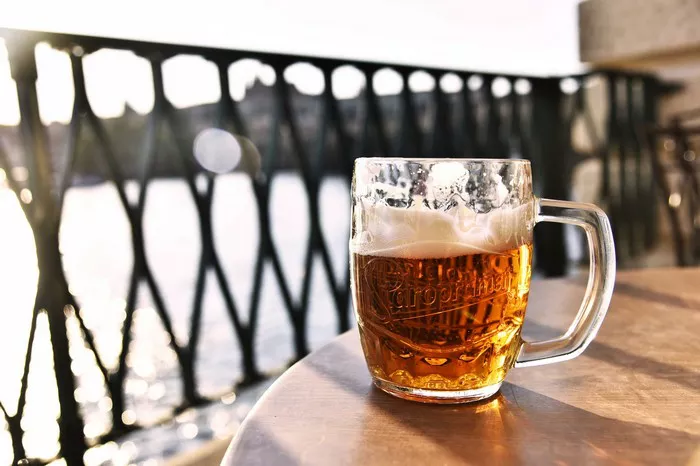Nitro draft beer has emerged as a popular choice among beer enthusiasts, captivating palates with its unique texture, creamy head, and smooth finish. But what exactly is nitro draft beer, and what sets it apart from traditional carbonated beers? In this comprehensive guide, we delve into the intricacies of nitro draft beer, exploring its origins, production process, serving techniques, and the sensory experience it offers.
Origins and Evolution: Understanding What is Nitro Draft Beer
Nitro draft beer traces its roots back to the 1960s when Michael Hardman and John Young established the iconic Guinness Brewery in Dublin, Ireland. Seeking to differentiate their flagship stout, Guinness, they pioneered the use of nitrogen gas as an alternative to traditional carbon dioxide (CO2) for carbonation. This innovative approach transformed the beer landscape, giving birth to what we now know as nitro draft beer.
Since its inception, the popularity of nitro draft beer has soared, transcending borders and beer styles. While stouts like Guinness remain quintessential examples, breweries worldwide have embraced nitrogenation to enhance a variety of beer styles, including pale ales, porters, and even IPAs.
The Nitrogenation Process: Crafting the Perfect Pour
At the heart of nitro draft beer lies the nitrogenation process, a meticulously orchestrated technique that sets it apart from its carbonated counterparts. Unlike traditional beers carbonated with CO2, which produces smaller bubbles and a sharper mouthfeel, nitrogenation imparts a velvety texture and creamy head to nitro beers.
The process begins during brewing, where nitrogen gas, typically a mix of 70% nitrogen and 30% CO2, is infused into the beer at high pressure. This infusion creates minuscule nitrogen bubbles, significantly larger than CO2 bubbles, resulting in a smoother and denser foam when poured.
During dispensing, a specialized faucet fitted with a restrictor plate is employed to control the flow of beer. As the beer exits the faucet, the sudden drop in pressure causes the nitrogen bubbles to agitate, releasing their characteristic cascading effect—a mesmerizing sight for beer aficionados.
See Also: is non alcoholic beer good for diabetics
Sensory Experience: Decoding the Nitro Draft Beer Encounter
What sets nitro draft beer apart is not just its production process but also the sensory experience it offers. From the moment the pint is poured, one is greeted with a cascade of tiny bubbles dancing their way to the surface, culminating in a creamy, luscious head that blankets the beer.
Upon raising the glass to one’s lips, the initial sip reveals a velvety-smooth texture that glides effortlessly across the palate. The nitrogen bubbles impart a subtle effervescence, enhancing the beer’s mouthfeel and accentuating its flavor profile.
In terms of taste, nitro draft beers often exhibit a muted bitterness compared to their carbonated counterparts. This is attributed to the nitrogen bubbles’ ability to suppress carbonic acid formation, resulting in a more balanced and approachable flavor profile. Additionally, the creamy texture and prolonged contact with nitrogen enhance the perception of sweetness, further complementing the beer’s overall character.
Serving Rituals: Mastering the Art of the Nitro Pour
The presentation of nitro draft beer is as crucial as its production, with a well-executed pour being the cornerstone of the experience. Mastering the art of the nitro pour requires precision, patience, and a keen eye for detail.
To achieve the perfect pour, start by selecting a clean, nitrogen-compatible glassware—typically a tulip or pint glass with a nucleation point at the bottom to encourage bubble formation. Tilt the glass at a 45-degree angle and begin pouring the beer slowly down the side, allowing it to glide smoothly and minimize agitation.
As the glass fills to around three-quarters full, gradually straighten it to an upright position, ensuring a gentle cascade of bubbles and a creamy, two-finger head. Once poured, allow the beer to settle for a moment, allowing the nitrogen bubbles to fully develop before presenting it to the eager recipient.
Nitro Draft Beer Beyond the Tap: Innovations and Explorations
While nitro draft beer traditionally conjures images of pub taps and cascading pints, breweries are increasingly exploring innovative avenues to bring this unique experience to broader audiences. One notable innovation is the introduction of nitro cans and bottles, allowing consumers to enjoy the velvety texture and creamy head of nitro beer from the comfort of their homes.
To replicate the nitro draft experience in a can or bottle, breweries employ a nitrogen widget—a small, pressurized capsule containing nitrogen gas. Upon opening the container, the widget releases nitrogen into the beer, recreating the signature cascade and creamy texture synonymous with nitro draft beer.
Additionally, advancements in draft technology have paved the way for nitro-infused cocktails, further blurring the lines between beer and mixology. From nitro cold brew coffee to creamy nitro cocktails, the possibilities are limited only by the imagination of brewers and bartenders alike.
Conclusion: Embracing the Nitro Revolution
In conclusion, nitro draft beer represents a revolutionary departure from traditional carbonated brews, offering a sensory journey characterized by its creamy texture, smooth mouthfeel, and mesmerizing presentation. From its humble origins at the Guinness Brewery to its global proliferation across beer styles, nitro draft beer continues to captivate and inspire beer enthusiasts worldwide.
As breweries continue to push the boundaries of innovation, exploring new techniques and flavors, the future of nitro draft beer appears brighter than ever. Whether enjoyed from a pub tap, a nitro can, or a nitrogen-infused cocktail, one thing is certain—nitro draft beer is here to stay, inviting us to savor each creamy sip and embrace the nitro revolution.


